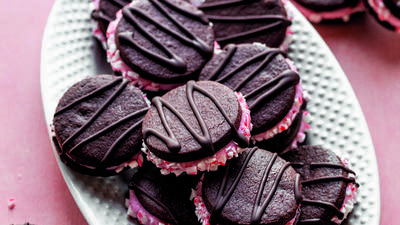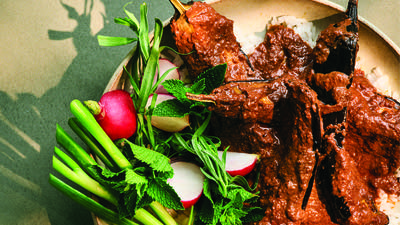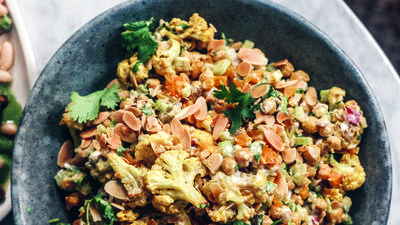
Saving space and improving flavor -- two things most home cooks are keen on. Homemade broth concentrate is a way to acheive both. Elle Simone, test cook and food stylist for America's Test Kitchen, talks with contributor Joe Yonan about the process for making vegetable broth concentrate. Try this America's Test Kitchen recipe for Vegatable Broth Base to have this handy staple at the ready in your home.
Joe Yonan: I love making homemade vegetable broth, partly because the store-bought stuff is truly awful. I have not found any that I like. Every couple of weeks I make it from trimmings of things that I'm cooking. But I still have to pour it into ice cube trays and put it in Ziploc bags, which takes up all this space in the freezer. You guys have figured out a much better way which is to make a concentrate.
Elle Simone: Yes, we have. But first, I would have to agree with you that store-bought broths are horrible; I just wouldn't recommend it. We have created a concentrate which, in your case, would be helpful because it takes up less space. You don't have to freeze it in ice trays. The concentrate is made of some key vegetable ingredients and salt, which keeps it from freezing. You can scoop it out and use it one tablespoon at a time.
JY: Amazing. How do you make it?
ES: We use leeks and dried onion flakes because dried onion flakes have less liquid. We want this concentrate to be more flavorful from vegetables, not from water.
JY: That's smart.
ES: We use celery root, which is a little stronger than celery; it has more staying power. We have parsley, we use the stems. Tomato paste and soy sauce for umami. And a whopping two tablespoons of salt.
 Elle Simone
(Photo: Daniel J. van Ackere)
Elle Simone
(Photo: Daniel J. van Ackere)
JY: I love salt, but that sounds like a lot.
ES: Two tablespoons of kosher salt does sound like a lot of salt, but it is a two-to-one ratio to table salt, so it's really not that much. But we need those two tablespoons because it aids in the grinding of the vegetables. That's what keeps the texture nice and smooth.
JY: Of course. It’s also diluted, so there's that.
ES: And the salt keeps the mixture from freezing in your freezer. Again, it makes it easier to scoop out when you need it. No thawing necessary.
JY: When I saw the video of you making it, I thought it was an amazing moment. It's magic; it scoops out like a vegetable sorbet. That's just because of all the salt in there?
ES: Yes, and because we're also choosing to use vegetables that don't have high water content -- that also helps to keep the texture very even.
JY: I see. That's why you have the onion flakes instead the fresh onion, et cetera.
ES: Yes.
JY: So when you're ready to use it, you just re-hydrate it in water?
ES: Yes. You would do one tablespoon to one cup of boiling water, and you can use it like that if you like. A lot of people use vegetable broth for cooking meat, use it for braising; it makes perfect sense. However, if you want to use it for risotto or gravy and you want something nice and smooth, you can strain it. Strain out the particles and you'd have a nice delicious clear vegetable broth.
JY: Great. How long can I keep it in the freezer, Elle?
ES: Six months, honey. A long time, a long time. I think it's just the best fix because instead of taking up all your cabinet space with all these boxes or cans or whatever, you can just store this in your freezer and you have all the broth you need.
JY: I love it, I love it. Elle, this is fantastic. Thank you so much for coming and sharing it with us.
ES: Thank you for having me.
Before you go...
Each week, The Splendid Table brings you stories that expand your world view, inspire you to try something new, and show how food connects us all. We rely on your generous support. For as little as $5 a month, you can have a lasting impact on The Splendid Table. And, when you donate, you’ll join a community of like-minded individuals who love good food, good conversation, and kitchen companionship. Show your love for The Splendid Table with a gift today.
Thank you for your support.
Donate today for as little as $5.00 a month. Your gift only takes a few minutes and has a lasting impact on The Splendid Table and you'll be welcomed into The Splendid Table Co-op.




